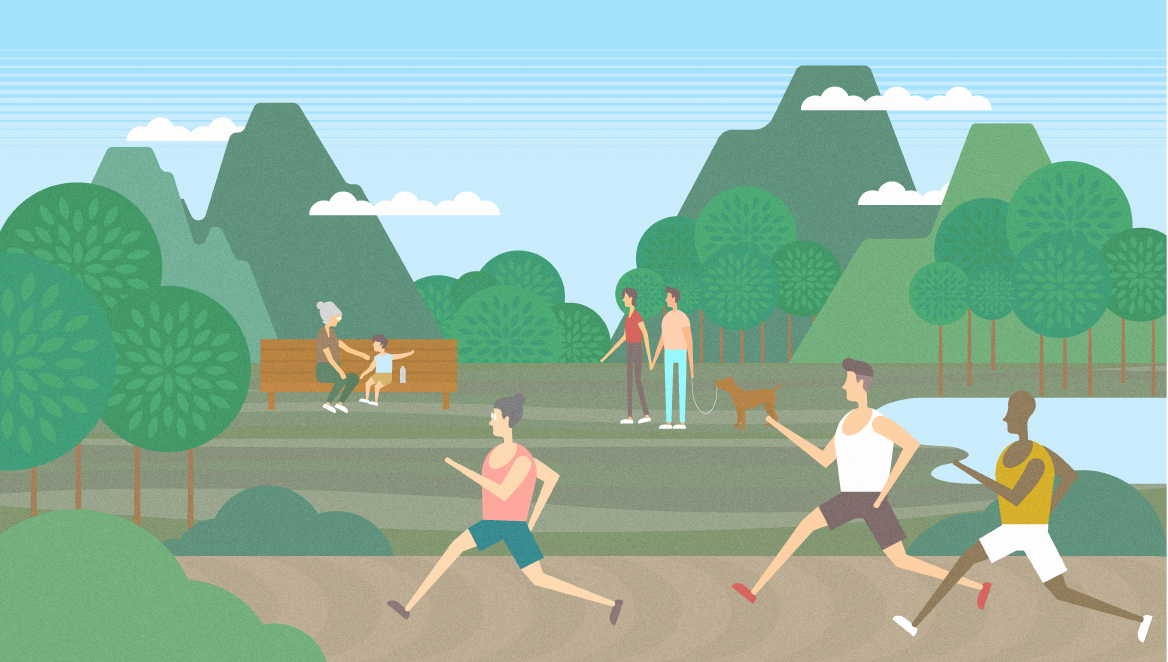DMatters March 2018 Issue

On a marathon-like practice to a liveable city
City running has become a popular social activity that crowds in radiating yellow and pink outfits can be seen around the city after hours. Undoubtedly, being physically fit is also a driving force too. Just earlier this year, over 60 thousand runners joined the signature marathon in Hong Kong, and this sporting culture is definitely a positive sign that our citizens are moving towards a more active lifestyle. Healthy living initiatives are crucial to the making of a liveable city, and having more participatory sporting events for citizens to converge is surely a good thing. While it was a great scene to see thousands of gratified faces as they pass the finish line at the event, the aftermath also made quite an impression. Pile of banana peels swarmed into garbage and plastic recycling bins, not to mention thousands of paper cups and plastic bottles were used and dumped just that morning.
More recently, as a Hong Kong’s staple tradition, Lunar New Year Fairs across all districts would produce tonnes of discarded waste and materials. Many local green groups have rolled up their sleeves and worked diligently with volunteers to alleviate the problem. In Environmental Protection Department (EPD)’s latest figures, the reduction in domestic waste in 2016, was offset by an increase in commercial and industrial waste and led to a net increase of 1.8% compared to 2015. For green and healthy city development, we need system-level design, placing the health and wellbeing of people at the centre. Every business and every one of us should work together to have shared responsibility as a global citizen. From reducing waste at public events to improving recycling efficiency, redesigning industry practices to developing municipal solid waste charging scheme, every bolt and nut counts.
As our city welcomes more and bigger recreational and sport programming, waste reduction, disposal and recycling provide major co-design opportunity for organisers, groups, citizens. We have seen some global initiatives concerning waste reduction in fashion and textile, electronics manufacturing, etc. Zero Waste Design Guidelines is one of the examples from New York City. These guidelines offering strategies and policy suggestions specific to building and construction, in fact, grew from a question posed by architect Clare Miflin who was moderating an urban green panel. “What can architects do to support organics collection in the buildings they design?”. Roundtable discussions and collaborative workshops among architects and industry-wide participants were then organised. This is a demonstration of how a spark of curiosity would start to make a difference.
Transcending one’s efforts from personal to social responsibility, it takes perseverance and commitment. Over the last decade, ‘liveability’ has become an increasingly popular term used in the urban policy. The involvement of the local community, together with the partnerships between local organisations, providers and other key stakeholders, are key to enhancing city’s liveability. Runners eat precisely and practise routinely for a strong body while building a liveable city is like undergoing a cross-training in all aspects covering health system, public service design, community revitalisation and urban wellbeing.
Liveability, a concept that has been recognised worldwide, is about the quality of living in a city and is contributed by many elements, including the built and natural environments, economic prosperity, social stability and wellbeing, equity and access, education, cultural and recreation opportunities. In the upcoming Knowledge of Design Week (KODW) on 11-15 Jun, themed “Design for Liveability”, it will focus on the exploration of the relationship between the core concept of “liveability” with a wide range of industry representatives and key players which offers up-to-date industry insights and networking opportunities. With your participation, let’s gear up ourselves, every marathon runner in society, and run towards the goal of liveability.
Click here for DMatters (March) full issue.